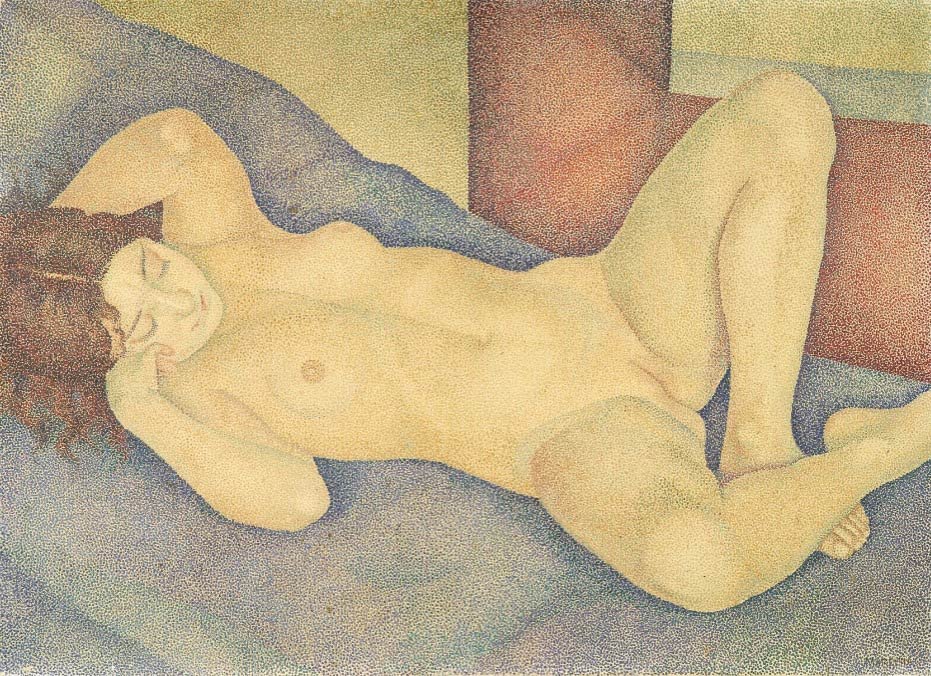Louis MARCOUSSIS
January 3, 2019Jacob MARKIEL
January 3, 2019MAREVNA (born Maria Rosanovitch Vorobieff)
CHEBOKSARY (RUSSIA) 1892 – LONDON 1984
Marevna was the daughter of a Jewish actress named Rosanovitch, who was married to Alexandre Vorobieff. When she was two years old, Marevna was adopted by the Polish Catholic aristocrat Bronislav Stebelski, who was a forestry and wood inspector. She lived with him in the Caucasus until she was eighteen. In 1907, she took classes at the Tiflis junior high school in Georgia. In 1910, she left for Moscow where she attended the School of Decorative Arts. She visited museums and discovered paintings by the Impressionists and the Italian primitive school.
From 1910, Marevna traveled in Europe. She visited Rome and Capri and met the writer Maxim Gorky, who encouraged her to paint. The latter found her nickname Marevna, which means Mary, daughter of the sea. In Rome, Marevna became friends with Gorky’s son Yura Andreyevich. She arrived in Paris in 1912 and attended the Zuloaga Academy, the Colarossi Academy in 1913 and the Russian Academy, where Chana Orloff, Jacques Lipchitz, and Ossip Zadkine were already studying. Yura Andreyevich introduced her to his father’s friends: Max Volonchine, Boris Savinkov, and poet Ilya Ehrenburg. In 1914, Marevna’s father committed suicide, which left Marevna on her own. Grief-stricken, she traveled to Portofino, Biarritz, and Spain. Back in Paris, Ilya Ehrenburg asked her to illustrate his collection of poetry. The famous police chief Léon Zamaron, who was an art lover, took an interest in her painting. Gustave Kahn, art critic and director of the newspaper Le Quotidien, was also keen on her work. They were her first patrons.
In 1919, she met Mexican painter Diego Rivera, with whom she had a daughter named Marika. In 1921, Diego Rivera returned to Mexico. Between 1923 and 1926, Marevna produced woven textiles inspired by Georgian themes for Paul Poiret. She had several solo exhibitions. Art dealer Léonce Rosenberg bought some of her paintings. During World War II, Marevna took refuge in Saint-Paul-de-Vence, Beaucaire, and Cagnes in the south of France. In 1949, she settled in London with her daughter and returned to Paris in 1960. Marevna spent her time between Paris and London where she died in 1984. One day, Picasso, who admired her, told her “we shall make you into an even greater artist than Marie Laurencin.”
Stories of Jewish Artists of the School of Paris 1905-1939
FRENCH-ENGLISH
Capitale des arts, le Paris des années 1905-1939 attire les artistes du monde entier. De cette période de foisonnement, un terme est resté, celui d'Ecole de Paris, qui recouvre une grande diversité d'expression artistique. Dans ce brassage dont Montparnasse est le creuset, un groupe se distingue : celui des artistes juifs venus de Russie, de Pologne et d'Europe centrale. Si leurs styles sont variés, un destin commun les rassemble : ils fuient l'antisémitisme de leur pays d'origine. Certains ont connu la célébrité dès les années 1920, tels Soutine, Lipchitz ou Chagall. D'autres n'ont pas eu le temps ou la chance d'y accéder. Près de la moitié a péri dans les camps de concentration nazis.
From 1905 to 1939, Paris attracted artists from all over the globe as the capital of the art world. This period of artistic proliferation became known as the School of Paris, and includes a great diversity of artistic expression. Within the teeming art world centred on Montparnasse, one group set itself apart: Jewish artists from Russia, Poland, and Central Europe. Although their styles were diverse, they shared the common fate of fleeing anti-Semitic persecutions in their home countries. Some became famous in the 1920s, such as Soutine, Lipchitz, and Chagall, while others did not have the time or the luck to gain renown. Nearly half of these artists died in Nazi concentration camps.






